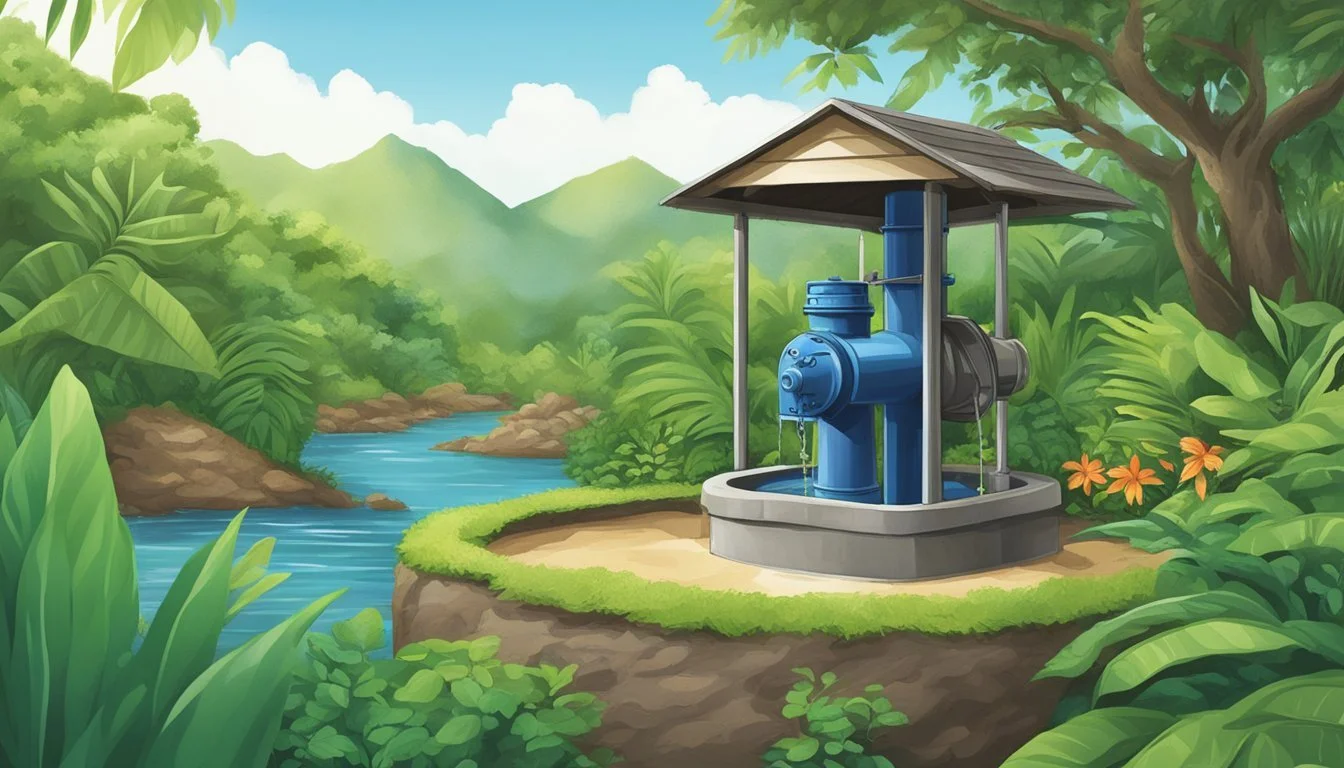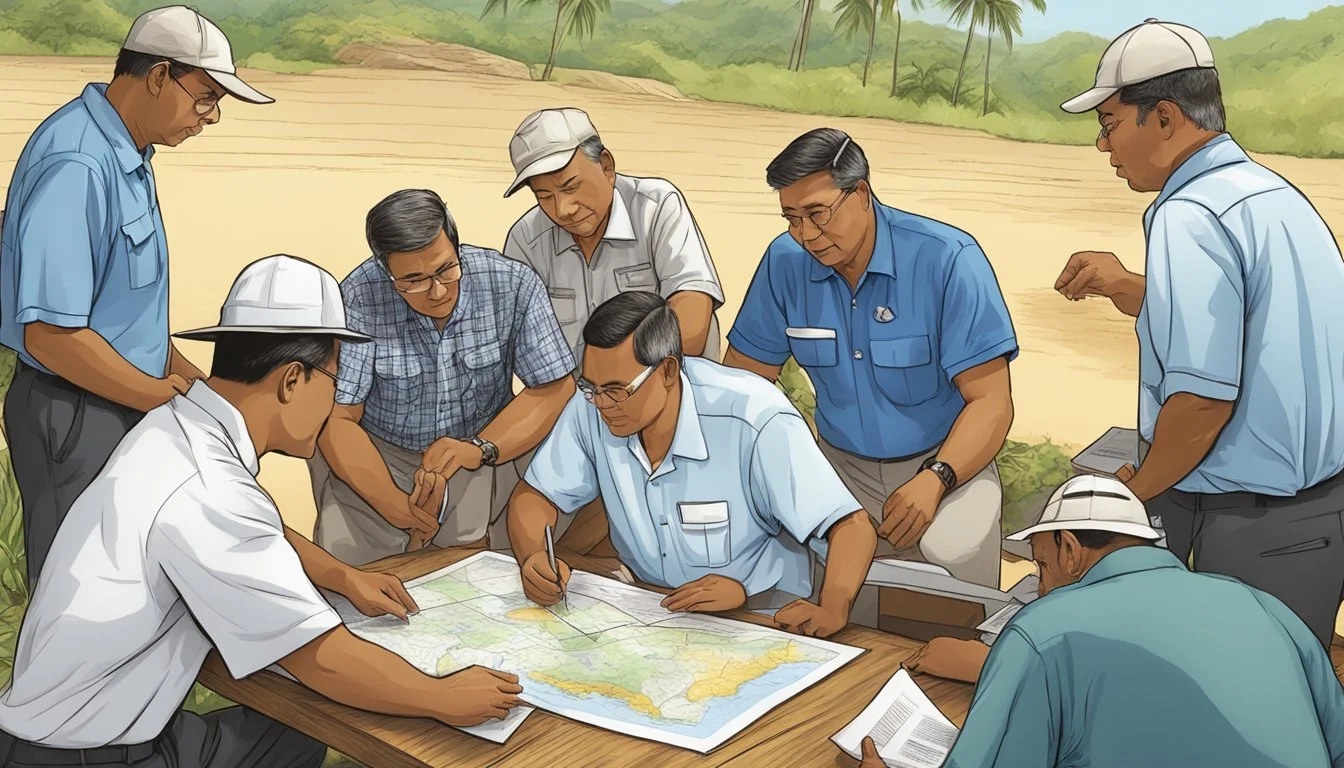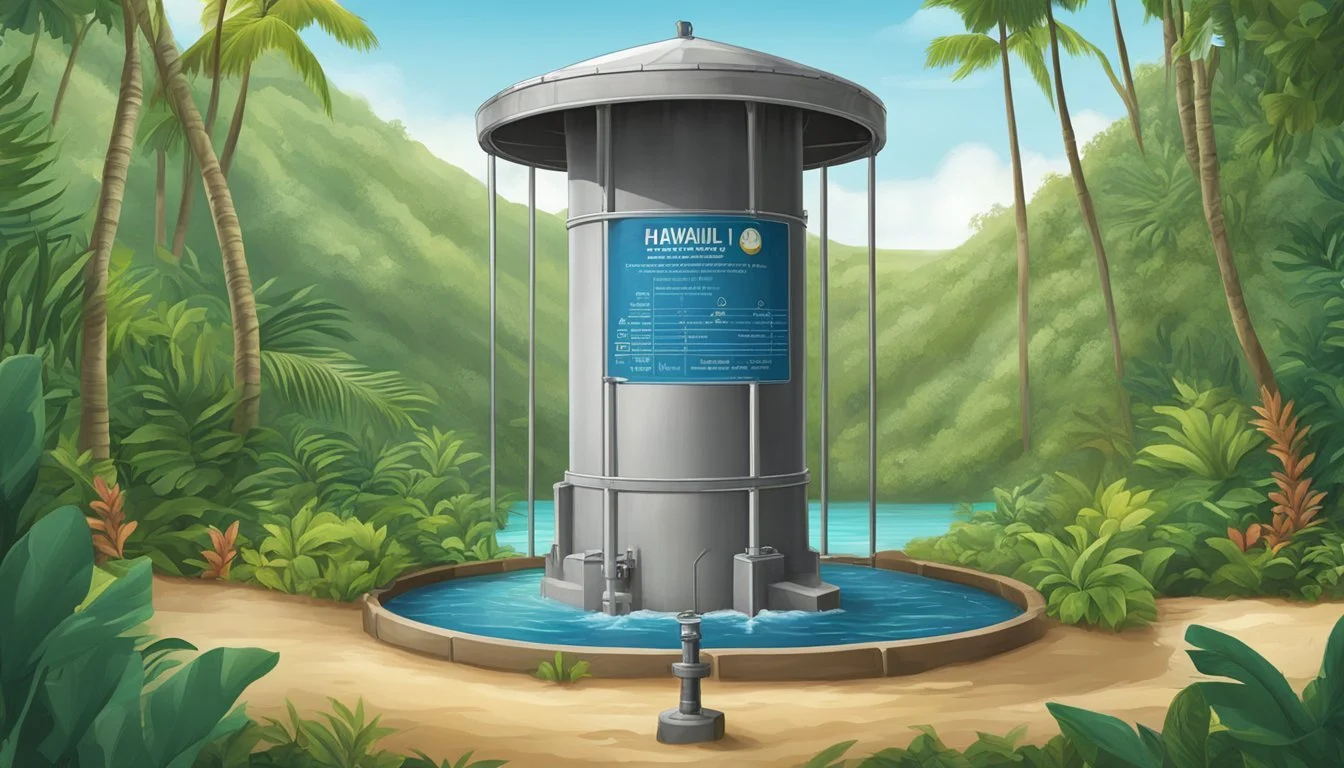Hawaii Water Well Regulations
Understanding the Legal Framework
Water resource management is a critical concern in Hawaii, an archipelago with unique ecosystems and limited freshwater resources. The state has established a comprehensive framework to ensure that the extraction and use of groundwater, which is a vital resource for Hawaii's communities and agriculture, are properly regulated. These regulations are necessary to protect both the quantity and quality of the groundwater, ensuring that current and future generations have access to clean and sustainable water supplies.
The Hawaii State Water Code outlines the legal foundation for managing the state's water resources, while the Administrative Rules of the Department of Land and Natural Resources provide detailed standards for various water-related activities. Among these activities are the construction, modification, repair, and sealing of wells. The Commission on Water Resource Management oversees the application of these standards, aiming to safeguard Hawaii's groundwater resources from contamination and overuse.
Ensuring compliance with these regulations, the commission mandates permits for well construction and pump installation, incorporating guidance from the Hawaii Water Plan. This regulatory approach reflects the integration of state water management goals with county-level plans and policies, laying out a unified strategy for land and water use that responds to Hawaii's environmental challenges and the needs of its people.
Hawaii Water Resource Overview
Hawaii's water resources are meticulously managed to ensure sustainability and purity. This management is vital given the island's unique geographical and climatic conditions, which deeply impact water availability and quality. The following sections detail the core aspects of Hawaii's Water Resource Protection Plan and the various water resources.
Water Resource Protection Plan (WRPP)
The Commission on Water Resource Management develops and implements the Water Resource Protection Plan (WRPP). It is designed to safeguard Hawaii's water resources for present and future generations, prescribing measures to protect watersheds and maintain the quality of the water supply.
Surface Water Resources
Hawaii's surface water resources are managed to maximize efficiency and minimize waste. The Commission oversees the sustainable use of surface water, ensuring it meets the demands of diverse agricultural activities and urban uses.
Ground Water Sources
Ground Water Sources are a critical component of Hawaii's water supply. Careful monitoring and regulation of well construction and pump installation help prevent contamination, thereby preserving the quality of these precious aquifers.
Natural Stream Environments
Hawaii's natural stream environments are protected under state regulations to maintain their ecological balance. The Commission on Water Resource Management emphasizes the importance of these ecosystems, recognizing their role in supporting native flora and fauna as well as cultural practices.
Regulatory Framework
Hawaii's approach to managing its valuable water resources involves a comprehensive regulatory framework designed to preserve water quality and ensure sustainable usage. This framework is shaped by state laws and enforced by various agencies to protect both the quantity and quality of the state's groundwater resources.
State Water Code
The State Water Code plays a pivotal role, underpinning Hawaii's efforts to manage and protect water resources. It outlines the fundamental principles and guidelines that ensure water is conserved and allocated in a manner that serves the public interest. This code mandates the development of standards for activities such as the construction and sealing of wells.
Commission on Water Resource Management (CWRM)
The Commission on Water Resource Management (CWRM), part of the Department of Land and Natural Resources, is tasked with implementing the State Water Code. They carry out responsibilities including setting conservation policies, defining beneficial water uses, and regulating water service providers.
Hawaii Revised Statutes
Hawaii Revised Statutes encompass laws applicable statewide, including those pertaining to water rights and usage. These statutes provide the legal authority for regulations and enforcement actions on various environmental and water-related issues. They authorize agencies like CWRM to carry out their regulatory roles.
Hawaii Administrative Rules
Finally, the Hawaii Administrative Rules are specific regulations that detail the procedures and requirements set out by the State Water Code and statutes. These rules are essential tools that agencies use to govern water resources, manage permits, and protect public health and the environment, as stipulated by state policies.
Water Use and Conservation
In Hawaii, the Commission on Water Resource Management oversees stringent policies related to water use and conservation, with a focus on safeguarding water quality for the state’s diverse ecosystems and populations. This section will detail the specific regulatory framework governing water use permitting, outline the key conservation policies enacted to preserve this vital resource, and discuss the strategic water quality plan in place to maintain the highest standards of water cleanliness.
Water Use Permitting
The state of Hawaii operates a permit system to regulate water use effectively. All significant withdrawals of water in the state require a permit, which helps delineate beneficial and reasonable uses. Criteria for obtaining a permit are rigorous, ensuring that any water use adheres to state conservation goals and supports the natural ecological balance.
Conservation Policies
Hawaii has set an ambitious water conservation plan, which includes policies such as mandatory water audits for public utilities. The objective of these policies is twofold: to reduce water loss through efficient use and to promote conservation practices among consumers, businesses, and agricultural entities.
Water Quality Plan
The integrity of Hawaii’s water is underpinned by a comprehensive water quality plan, aiming at achieving maximum beneficial use of water while ensuring its purity. This plan includes a wide range of regulations that control water for public purposes, focusing on maintaining and improving water quality across the state's water systems.
Well Construction and Maintenance
Hawaii's regulations ensure that all well construction and pump installation work is conducted according to high safety and environmental standards. These measures are critical to preventing pollution and maintaining the quality of the groundwater aquifers.
Well Construction Standards
Hawaii's Well Construction Standards are governed by the State Water Code, which mandates that well construction must avoid contamination and waste of groundwater resources. The Commission on Water Resource Management specifies that all well construction activities - whether for new wells or modifications to existing ones - must comply with these standards to protect aquifers and ensure safe maintenance.
Goals: To ensure safety, prevent waste, and prevent groundwater contamination.
Requirements: Include proper sealing, case use, and materials that must be used in construction to prevent leakage and contamination.
Pump Installation Requirements
Pump installation in Hawaii is equally regulated to maintain the integrity of water wells. The Pump Installation Requirements are a set of protocols that aim to ensure that water extraction does not lead to aquifer depletion or pollution. The Hawaii Administrative Rules detail the permitting process for pump installations, including criteria for equipment and requirements for professional oversight during installation.
Permitting: No pump installation can commence without a permit issued by the Commission on Water Resource Management.
Standards: Installation must adhere to state-defined standards to ensure that the work is in alignment with the preservation of water quality and prevention of well and aquifer damage.
Planning and Development
In Hawaii, the approach to water well planning and development hinges on a comprehensive framework that integrates resource management measures. Strategic planning ensures sustainable practices align with the Hawaii Water Plan and adheres to specific development guidelines.
Hawaii Water Plan
The Hawaii Water Plan is pivotal for resource management, addressing water supply issues and conservation. It is outlined under Chapter 174C of the Hawaii Revised Statutes, which mandates a comprehensive planning process. The plan serves as a guide for state and county decision-makers, offering well-defined options and strategies for future water resource management and development. This living document is essential in ensuring Hawaii's water resources are protected and optimally used.
Development Guidelines
The state provides guidelines for assessing water well development projects to ensure aquifers and hydrologic units are not compromised. These guidelines include:
Orientation Maps: Essential for analyzing the impact on aquifers.
Technical Standards: Prescribe methods for well construction, modification, and sealing.
Review Protocols: Enforce compliance with regulatory requirements.
Developers and planners employ these guidelines to maintain the integrity of Hawaii's water resources through conscientious development practices.
Water Resource Management
The Commission on Water Resource Management in Hawaii is tasked with the essential role of ensuring the responsible stewardship of the state's water resources. The commission's strategic approach involves enforcing regulations and promoting the sustainability of water supplies.
Regulations and Policies
Hawaii's water resources are governed by a set of stringent regulations which aim to protect both the quality and quantity of groundwater. The Commission on Water Resource Management establishes minimal standards for well construction, modification, and abandonment, ensuring that the integrity of hydrologic units is not compromised. These policies are periodically reviewed and adjusted to reflect the latest understanding of the water occurrence and the needs of the community.
Resource Sustainability
Sustainability is the cornerstone of Hawaii's water resource management. The commission's dedicated staff works tirelessly to optimize the available groundwater supply by overseeing its use, implementing the Hawaii Water Plan requirements, and promoting water augmentation strategies when necessary. The focus is on achieving a balance that supports both current needs and future demands, considering the ecological implications and ensuring the long-term viability of Hawaii's water resources. The groundwater management efforts include regulatory controls to maintain this delicate equilibrium, which is necessary for the state's environmental and economic wellbeing.
Public Health and Safety
Ensuring safe drinking water is a critical aspect of public health in Hawaii. These measures are designed to protect the community from waterborne hazards and to maintain the quality of water sources.
Department of Health Standards
The Hawaii State Department of Health sets rigorous standards aimed at preserving public health. These regulations require that public water system operators provide safe drinking water by adhering to established health guidelines. The standards are in place to prevent harmful substances from entering the water supply.
Contamination and Pollution Control
To address and prevent water contamination, the Safe Drinking Water Branch enforces policies that protect Hawaii's surface water and groundwater. These efforts are essential for controlling pollution and ensuring that the state's water resources do not become a health hazard. Operators of public water systems are required to comply with these regulations to safeguard Hawaii's aquifers and its residents' wellbeing.
Resource Planning Tools
Hawaii's comprehensive approach to managing its water resources necessitates the use of detailed planning tools. These tools are designed to ensure the sustainable use and development of water systems, incorporating the state's demand for water with the need to maintain environmental balance.
Water Use and Development Plans
Water Use and Development Plans (WUDPs) are a critical component for the Commission on Water Resource Management. WUDPs provide a framework that outlines strategies and practices to manage water resources effectively. These plans are tailored for each county and encompass four major water systems: surface water, ground water, reclaimed water, and storm water. Through WUDPs, the management integrates tabular format data to concretely evaluate current water usage against long-term sustainability goals.
Planning Templates and Formats
To streamline the water resource management process, planning templates and formats have been established. These templates offer a consistent structure for documenting and assessing the state’s water resources. Essential elements in a template include current infrastructure assessments, water supply forecasts, and demand analysis. By following a standard format, planners can compare data across different regions and periods effectively, facilitating more informed decisions in regards to water resource management.
Frequently Asked Questions
The following subsections address common inquiries about Hawaii's water well regulations, providing clarity on standards, legal requirements, and well water usage.
What are the current well construction and pump installation standards in Hawaii?
In Hawaii, well construction and pump installation must comply with specific standards amended to the Hawaii Administrative Rules. These standards are designed to ensure the safe and sanitary maintenance and operation of water wells.
How does Hawaii State Water Code regulate the use of well water?
The use of well water in Hawaii falls under the Hawaii State Water Code which establishes a framework for the protection, control, and regulation of water resources. This includes the obligation to protect water resources for the benefit of Hawaii’s people.
What are the legal requirements for drilling a well in Hawaii?
To drill a well in Hawaii, individuals and entities must secure water rights and comply with environmental regulations. Legal adherence ensures water quality standards are met and resources are sustainably managed.
What is the required distance between a water well and property lines in Hawaii?
Regulations in Hawaii stipulate a mandatory setback distance between water wells and property lines. However, the exact required distance can vary depending on the county and other local ordinances.
Are there any specific areas in Hawaii where well drilling is prohibited or restricted?
Certain areas in Hawaii are either off-limits to well drilling or face strict limitations based on environmental concerns, conservation efforts, and community resources management. These restrictions help protect and restore inland and coastal waters.
How does Hawaii manage and enforce water rights and well water usage?
Hawaii enforces water rights and well water usage through its Commission on Water Resource Management, which oversees managing the state's water resources. Adherence to water quality and water contamination guidelines ensures the integrity of water supplies.









